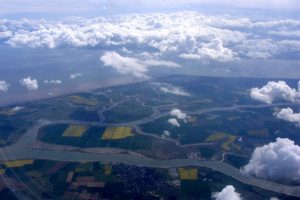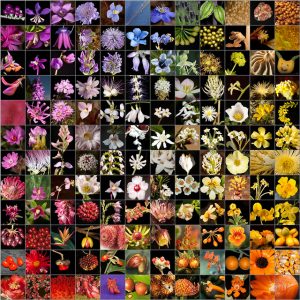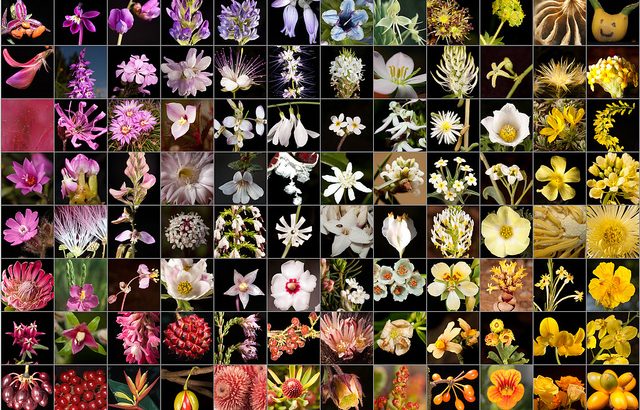by Auriel Fournier
Math and Statistics subject editor
Conservation is hard, but in a perfect world it wouldn’t be – we’d need to do something to conserve a species or ecosystem and we’d have the resources to do it. That rarely happens. Not only are resources limited but how we decide what to conserve and how we choose to do so is never simple. For example, before we can decide which piece of land to conserve, we have to decide what we value. One way we do that is by talking about species diversity.
…how we decide what to conserve and how we choose to do so is never simple
Often when we start talking about conservation, we have a species or suite of species that we are interested in conserving. But there may also be other things we value such as recreation, aesthetics, and historical or cultural uses. Landscapes are never simple. In most areas, habitats are not large and intact. They are patchy and owned and valued by many different groups. Balancing these different interests to achieve conservation goals is hard. Some groups care only about one group of species (e.g., fish), others want to be able to enjoy the landscape by hiking or camping, while still others care more about intrinsic value, such as knowing that an endangered species has adequate habitat. All of these views are valid, of course, but balancing them is challenging. Species diversity is often part of this equation. As simple as diversity may sound, there are many ways of evaluating it.

Patchwork landscape (Photo: St Stev; CC BY-NC-ND 2.0)
Does diversity mean as many species as possible? If so, what species are we interested in – birds, mammals, reptiles, plants, insects, spiders, fish (the list goes on)? Do we want to conserve places that are strongholds for a few common or charismatic species or for rare or endangered species? How do we rank possible places to be conserved – by area, by number of species, by cost, by proximity to other properties? Conservation biology has been struggling with these questions for its entire existence and uses metrics, or mathematical ways of assigning numbers and ranks based on what we value, to help guide our decisions.

Diversity comes in many forms (Photo: C.E. Timothy Paine; CC BY-NC 2.0)
Often when we are trying to conserve land, or a species, or a habitat, we put together a plan that identifies potential pieces of land that we could conserve, and then ranks them. Some ways of ranking properties value the number of species (20 species at property A, 12 at property B, 5 at property C, and 13 at property D). But in this example, which property is most valuable?
By one measure it’s property A, hands down. It has the most species. But what if property C has 5 species that aren’t found on any other property? What if 3 are endangered? Hopefully before this process starts, we can determine our conservation priorities. How much money do we really have? Do we want the new area to be near other areas already being conserved? The answers to these questions are never black and white. They depend on our goals and on what the organization(s) conserving the land value(s).
The answers to [conservation] questions are never black and white. They depend on our goals and on what the organization conserving the land values.
A current example of this dilemma is taking place outside Cape Town, South Africa. A ‘threatened’ leopard has killed several ‘endangered’ penguins. These kinds of situations happen more often than you might think, and the answers are complex and often depend on the spatial scale we are looking at. This site outside of Cape Town is one of four places in the world where this species of penguin breeds, which makes it a very big deal. But the leopard is actually more ‘endangered’ at the local scale. The penguins are also a tourist attraction and help bring money into the area. And, while this is a seemingly simple case involving only two species, we don’t know how the other species in the area will be affected if the leopard or penguin populations change. The leopard might be keeping other predators in check. On the other hand, the penguins might be bringing important nutrients out of the ocean and onto land, which helps to nourish the surrounding plants.
The difficulty is that an ecosystem is not the sum of its parts. Twenty species and 19 species can be drastically different if that one missing species provided some vital service to the others. Species interact in many ways, depending on or competing with each other. When one species disappears another may increase and become dominant, or it may decline because it depends on the missing species. With other threats to species like climate change in the mix, it can be hard to evaluate how losing one species will impact others even with the best models and data.
Mathematical models can help guide our decisions…But before we can use these tools, we have to decide what we value. And while math can be difficult, deciding what we value is much, much harder.
For most species, the data we need to model possible scenarios simply don’t exist. Mathematical models can help guide our decisions. They can help us evaluate choices, compare options, and incorporate information about cost but they are only as good as the information we give them. That information is both the data we have about the ecosystem, and metrics that describe how we value the system and its components. We can give the model information about how we value different parts of the ecosystem, such as the presence of an endangered species, the square kilometers that would be conserved, or the diversity of fish species. With the right inputs, these models can make a real difference in conservation planning. But before we can use these tools, we have to decide what we value. And while math can be difficult, deciding what we value is much, much harder.




